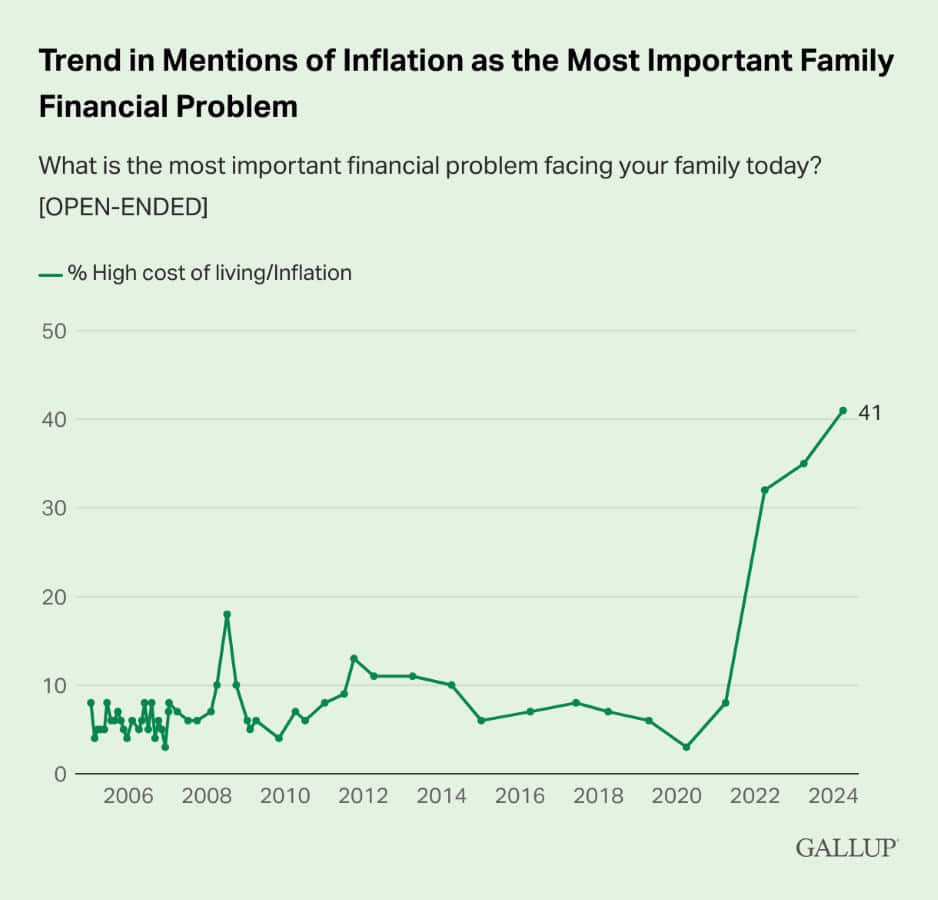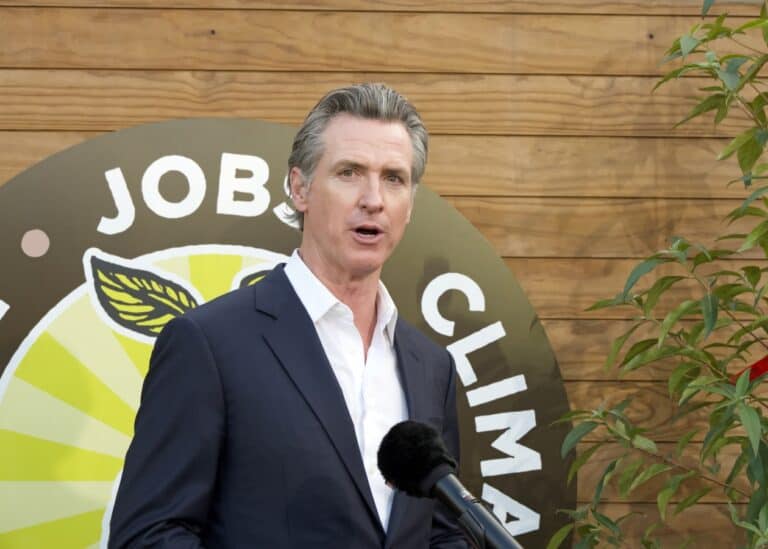Americans Are Teetering on the Edge of Financial Strain As 1 in 5 Users Is Maxed-Out

In its Quarterly Report on Household Debt and Credit for the first quarter of 2024, the New York Fed’s Center for Microeconomic Data highlighted a concerning trend: more borrowers are falling behind on credit card payments. 1 out of every 5 borrowers is maxed-out.
Rising Credit Card Delinquencies

While the nationwide aggregate credit card utilization rate stood at approximately 23 percent last quarter, individual utilization rates varied significantly. Notably, 52 percent of borrowers were utilizing less than 20 percent of their available credit, whereas 18 percent were utilizing at least 90 percent of their available credit.
Missed Credit Card Payments

Missed credit card payments stem from a variety of causes including forgetfulness, cash flow issues, and income reduction.
Most of these factors are not easily detectable in individual credit data, but one clear indicator that often predicts future delinquencies is high credit card utilization.
In the first quarter of 2024, borrowers who were up-to-date on their credit card payments had a median utilization rate of 13 percent from the previous quarter, whereas those who fell into new delinquencies had a much higher median rate of 90 percent.
Such high utilization typically signals a strained financial situation. Credit utilization is also a critical factor in determining credit scores, which assess the likelihood of future defaults.
Number of Maxed-Out Borrowers Increasing

The chart displays a time series for non-delinquent maxed-out borrowers, where the blue line represents their proportion among current borrowers, and the red line illustrates their share of total current balances.
Since 2022, there has been a resurgence in credit card balances, leading to an increase in both the number and balance share of maxed-out borrowers. Although these shares are still below their 2020 peak, they are gradually approaching those levels again.
Delinquency Rates Among Borrowers

The chart by the New York Fed illustrates the shift of credit card balances into delinquency among current borrowers, segmented by their credit card utilization from the previous quarter.
Both the 0-20 percent and 20-60 percent utilization groups maintain low delinquency transition rates throughout the series—1 percent and 4 percent, respectively, returning to 2020 levels.
In addition to the increasing number of maxed-out borrowers, the delinquency rate is also skyrocketing.
Delinquency rates for those with over 60 percent utilization have not only surpassed 2020 figures but continue to climb, driving the overall increase in credit card delinquency rates.
Notably, the 90-100 percent utilization group shows a significant surge, with approximately one-third of the balances for maxed-out borrowers becoming delinquent in the past year, a marked rise from less than a quarter before the pandemic.
Surging Transportation, Food and Housing Costs Have Crushed Americans

Between 2019 and 2023, the all-food Consumer Price Index (CPI) surged by 25 percent, surpassing the growth rate of the all-items CPI, which stood at 19.2 percent during the same period as per USDA data. Essentials such as food prices saw a 25% increase while transportation costs increased by 27.1%.
Americans would have no choice but to resort to credit cards.
Generational Divide On Credit Card Utilization

While Baby Boomers rarely max out their credit cards, 15.3 percent of Generation Z cardholders use over 90 percent of their credit limit.
Gen Z’s median credit limit stands at $4,500, significantly lower than the limits for older generations, which are $16,300 for Millennials and $22,000 for Baby Boomers. This disparity largely stems from Gen Z’s shorter credit histories and correspondingly lower credit scores, coupled with lower incomes.
On average, Gen Z’s first credit card account is four years old, compared to Millennials’ eleven years. Gen Z exhibits the highest rate of delinquency transition, although Millennials are the only group with delinquency rates surpassing their 2020 levels.
Household Debt Surged To $17.69 Trillion

Due to to rising inflation, Americans have been forced to go deeper into debt. The most recent Quarterly Report on Household Debt and Credit from the New York Fed reveals a $184 billion surge in total household debt, reaching $17.69 trillion.
Auto Loan Delinquencies Accelerating

Auto loan balances grew by $9 billion, maintaining their upward trend since 2020 and reaching $1.62 trillion.
Housing Debt on the Rise

During the first quarter of 2024, mortgage balances reported on consumer credit reports rose by $190 billion, totaling $12.44 trillion by the end of March.
Balances on home equity lines of credit (HELOC) rose by $16 billion, marking the eighth consecutive quarterly increase since the first quarter of 2022. The total outstanding balances now stand at $376 billion, which is $59 billion higher than in the third quarter of 2021.
Inflation Top Concern As Per Gallup Poll

For the third consecutive year, the proportion of Americans identifying inflation or high living costs as their family’s top financial problem has hit a new peak. This year, 41% cite the issue, a slight increase from 35% last year.
The latest findings come from Gallup’s annual Economy and Personal Finance poll, conducted between April 1 and 22, 2024. Since 2005, Gallup has asked Americans annually to name the top financial problem facing their family without prompting.
Inflation has been the leading concern for the past three years.
Americans Under Increased Financial Stress

Americans are experiencing rising prices in various areas, including purchases made with credit cards, grocery expenses, fuel costs, and other goods. It is plausible that the escalating prices and resulting debt service payments negatively impact borrowers’ financial positions and make it more challenging to meet their financial obligations.
Rising credit card delinquencies are primarily linked to maxed-out borrowers and their balances. Since 2020, the proportion of maxed-out borrowers has been climbing, leading to notably higher delinquency transition rates among this group and overall. To reverse this trend, we need to see a decline in delinquency transition rates among maxed-out borrowers or a decrease in their share.
Unfortunately, current data show no signs of improvement in these areas. Without changes, credit card delinquencies are poised to keep increasing.
Like Financial Freedom Countdown content? Be sure to follow us!
The 10 States Taxing Social Security in 2024 and the 2 That Just Stopped

As 2023 tax filing season draws to a close, retirees across the nation are adjusting their financial plans for 2024, but a crucial detail could drastically alter the landscape of retirement living: the taxing of Social Security benefits. While many bask in the belief that their golden years will be tax-friendly, residents in nine specific states are facing a reality check as their Social Security benefits come under the taxman’s purview. Conversely, a wave of relief is set to wash over two states, marking an end to their era of taxing these benefits. This shift paints a complex portrait of retirement planning across the U.S., underscoring the importance of staying informed of the ever changing tax laws. Are you residing in one of these states? It’s time to uncover the impact of these tax changes on your retirement strategy and possibly reconsider your locale choice for those serene post-work years. Here are the states taxing social security benefits.
The States Taxing Social Security in 2024 and the 2 That Just Stopped
Retire Abroad and Still Collect Social Security? Avoid These 9 Countries Where It’s Not Possible

Dreaming of retiring to a sun-drenched beach or a quaint village? Many Americans envision spending their golden years abroad, savoring the delights of new cultures and landscapes. However, an essential part of this dream hinges on the financial stability provided by Social Security benefits. Before packing your bags and bidding farewell, it’s crucial to know that not all countries play by the same rules when it comes to collecting these benefits overseas. Here are the nine countries where your dream of retiring abroad could hit a snag, as Social Security benefits don’t cross every border. Avoid living in these countries so your retirement plans don’t get lost in translation.
Retire Abroad and Still Collect Social Security? Avoid These 9 Countries Where It’s Not Possible
What SECURE Act 2.0 Means for Your Future Retirement Plan

Three years on from the groundbreaking SECURE Act, which revolutionized America’s retirement landscape for the first time in a decade, the SECURE Act 2.0 sequel legislation aims to widen the gateway to retirement plans and benefits, introducing pivotal changes like automatic enrollment in select workplace pensions, increased catch-up contributions for the seasoned workforce, and extended retirement saving opportunities for part-time employees. Moreover, it promises to bolster individuals’ ability to set aside emergency funds, ensuring swift access in times of need, marking another significant stride toward securing a more financially stable future for all. Here are some of the key provisions.
What SECURE Act 2.0 Means for Your Future Retirement Plan
U.S. National Debt Soars, Adding $1 Trillion Every 100 Days – Why It Matters

The US National Debt began the year at $34 trillion and surged to $34.47 trillion by the end of February, piling on $470 billion in merely two months. With the debt continually compounding, it’s on a trajectory to swell by $1 trillion every roughly 100 days. At this rate of borrowing, the National Debt is projected to balloon by $2.8 trillion over the course of this year. With Federal Debt spirally out of control, what lies ahead for Americans and the US economy?
U.S. National Debt Soars, Adding $1 Trillion Every 100 Days – Why It Matters
Jeff Bezos’ Move Sparks Intense Debate Over Tax Policies

Amazon tycoon Jeff Bezos made waves in recent headlines by announcing his move from Seattle to Miami. This unexpected decision has piqued interest, sparking speculation about the motives behind the relocation and its potential long-term impacts for Washington State.
Jeff Bezos’ Move Sparks Intense Debate Over Tax Policies
Trump Tax Cuts Expiring Soon: Action Steps You Need to Take Now

Several key elements of the Tax Cuts and Jobs Act (TCJA) are scheduled to lapse by 2025. This pivotal tax reform, implemented during President Trump’s tenure, brought substantial changes to the U.S. tax structure. With the expiration drawing near, it’s crucial for individuals to take proactive steps in their tax planning.
Trump Tax Cuts Expiring Soon: Action Steps You Need to Take Now
Social Security Solvency Extended to 2035, Medicare Gains 5 More Years to 2036: What It Means for You

The projected depletion dates for Medicare and Social Security have been extended as reported in the annual trustees report for Social Security and Medicare released on Monday. However, officials caution that without significant policy changes, these programs may still be at risk of failing to deliver full benefits to retiring Americans.

John Dealbreuin came from a third world country to the US with only $1,000 not knowing anyone; guided by an immigrant dream. In 12 years, he achieved his retirement number.
He started Financial Freedom Countdown to help everyone think differently about their financial challenges and live their best lives. John resides in the San Francisco Bay Area enjoying nature trails and weight training.
Here are his recommended tools
M1 Finance: John compared M1 Finance against Vanguard, Schwab, Fidelity, Wealthfront and Betterment to find the perfect investment platform. He uses it due to zero fees, very low minimums, automated investment with automatic rebalancing. The pre-built asset allocations and fractional shares helps one get started right away.
Personal Capital: This is a free tool John uses to track his net worth on a regular basis and as a retirement planner. It also alerts him wrt hidden fees and has a budget tracker included.
Streitwise is available for accredited and non-accredited investors. They have one of the lowest fees and high “skin in the game,” with over $5M of capital invested by founders in the deals. It is also open to foreign/non-USA investor. Minimum investment is $5,000.
Platforms like Yieldstreet provide investment options in art, legal, structured notes, venture capital, etc. They also have fixed-income portfolios spread across multiple asset classes with a single investment with low minimums of $10,000.





